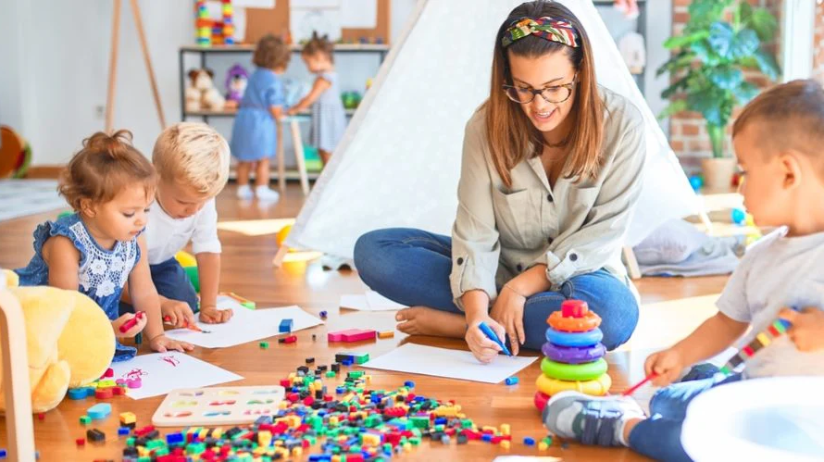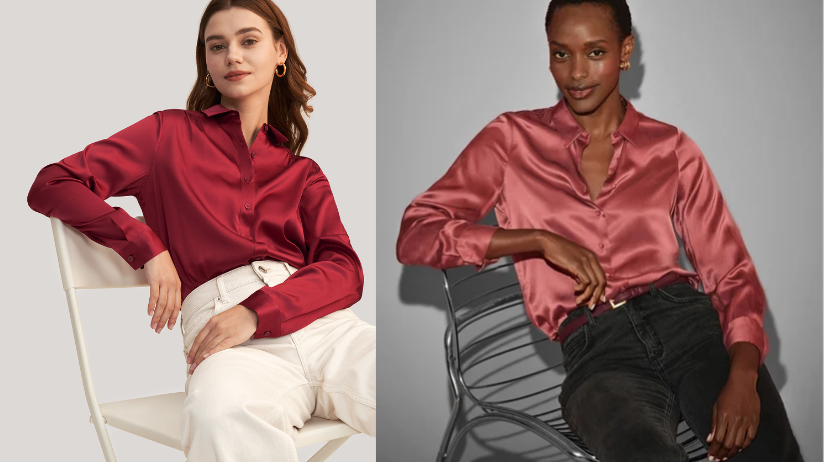Why Open Ended Toys Create Smarter Kids Than High Tech Gadgets
By Admin
Published on 2025-10-29 12:42:00

Open-ended toys like blocks, dolls, and art kits often outperform flashy gadgets when it comes to building imagination, problem-solving, and adaptability.
Every parent has seen it happen, a toy that sings, lights up, and promises endless entertainment gets played with for a week, then tossed aside. Meanwhile, a simple set of blocks or dolls somehow keeps a child busy for hours, transforming into a castle, a spaceship, or a family dinner. That is the magic of open ended toys.
Play is how children make sense of the world, and the toys they use shape the way they think, explore, and create. While flashy gadgets might capture attention, research and parenting experts keep returning to one idea: toys that allow children to lead the play spark deeper imagination, stronger problem-solving, and lasting skills.
What Are Open Ended Toys?
Parents often wonder, what are open ended toys and how are they different from the rest? The answer is simple. These are toys that have no single purpose, no one way to play, and no set ending. They adapt to a child’s ideas instead of directing them.
Think of building blocks, dolls, clay, or art supplies. One day, blocks are a tower. The next, they are a racetrack. A week later, they become part of a pretend kitchen. Each time, the toy takes on a new role.
This flexibility is what makes them powerful. Children control the storyline, use their imagination, and create meaning through play. That sense of ownership builds independence and problem-solving abilities in ways that instruction-heavy toys cannot.
Why Open Ended Play Matters for Development
The real benefit of open ended play is not just that it keeps kids busy. It builds a foundation for critical thinking, creativity, and adaptability, skills that help them thrive far beyond childhood.
Imagination at the Core
With open ended toys, there are no rules or scripts. Children invent their own scenarios, which expands creativity and storytelling skills. Pretend play has even been linked to stronger language development and social awareness.
Problem-Solving Skills
When a tower falls or a clay model doesn’t hold its shape, kids have to figure out what went wrong. They test new ideas, adjust, and try again. This trial-and-error process is the root of real-world problem-solving.
Independence and Confidence
Because the toy doesn’t dictate the next move, children feel in control. Making decisions during play boosts self-confidence and builds a sense of independence.
Long-Term Engagement
Good toys that are open-ended rarely lose their appeal. Children grow with them, using them in different ways as their skills and imagination expand.
Examples of Open Ended Toys That Never Get Old
When parents look for the best toys for imaginative play, the choices often seem endless. Here are categories of toys that consistently encourage creativity:
Building Sets
Blocks, magnetic tiles, and construction planks allow kids to design structures, vehicles, and cities. These toys support both fine motor skills and engineering thinking.
Pretend Play Sets
Dolls, animal figures, play kitchens, and dress-up clothing open up worlds of storytelling. They help children explore social roles, empathy, and relationships.
Creative Materials
Art supplies, modeling clay, and craft kits let children experiment with colors, textures, and forms. They create without limits, which is the essence of open-ended play.
Nature-Inspired Items
Loose parts like stones, shells, wooden discs, and sticks spark curiosity and imaginative use. Children turn them into food, money, furniture, or anything their minds invent.
How Open Ended Toys Compare in Value
Parents often think about cost when choosing toys. A plastic gadget with flashing lights may be cheaper in the moment, but open ended toys offer long-term value because they grow with a child. A set of blocks can be used from toddlerhood through the elementary years.
This extended lifespan also makes them better for the planet. High-quality open ended toys made of durable materials like wood or fabric can be passed down to siblings, resold, or even saved for future generations.
The Science Behind Open Ended Play
Studies in child development consistently show that open-ended play supports brain growth. Neuroscientists highlight how unstructured play strengthens the prefrontal cortex, the part of the brain that handles decision-making, creativity, and self-regulation.
Psychologists also point out that imaginative play teaches children how to think symbolically. When a stick becomes a sword, or a doll becomes a doctor, they are practicing flexible thinking. This mental flexibility translates into stronger problem-solving later in life.
Age-Appropriate Toy Suggestions
Choosing open ended toys depends on a child’s age, interests, and stage of development. Here are some toy suggestions to guide parents:
Infants and Toddlers
Soft blocks, nesting cups, wooden toys for toddlers, and large crayons are perfect. These simple toys encourage motor skills and early problem-solving.
Preschoolers
Pretend play takes off in these years. Play kitchens, dolls, animal figures, and dress-up boxes are excellent. They allow children to explore identity, relationships, and storytelling.
Early Elementary
Building sets, craft supplies, and science kits expand creativity and introduce new challenges. These encourage collaboration and critical thinking.
Older Kids
Art kits, construction sets with complex pieces, and role-play games give older children the freedom to design, plan, and build independently.
Balancing Gadgets and Open Ended Play
Technology is part of modern life, and gadgets have their place. But the foundation of childhood play should come from open ended toys. These toys give children space to be creators rather than consumers. When play is led by the child, not by the toy, the benefits extend into learning, problem-solving, and resilience.
Parents do not need to eliminate gadgets completely. Instead, creating a balance ensures that children get the best of both worlds. Screen time can be paired with tactile, creative play for a healthy mix.
How to Introduce Open Ended Play at Home
Shifting a child’s play habits can feel overwhelming, especially if they are used to electronic toys. Here are some tips to make the transition smoother:
- Start small by adding one or two good toys that are open-ended into the mix.
- Dedicate a play space where children can leave projects unfinished and return later.
- Rotate toys every few weeks to spark renewed interest.
- Join the play at first, modeling imagination, then step back and let them lead.
Why Open Ended Toys Are Worth It
Parents often look for toys that teach specific skills, letters, numbers, or shapes. While these are valuable, the broad skills developed through open ended play prepare children for a lifetime of learning. Creativity, adaptability, resilience, and social awareness are not skills that fade. They build a foundation for academic success, emotional well-being, and future careers.
The best toys for imaginative play are the ones that grow with your child, adapt to their interests, and never run out of possibilities. Whether it is a set of blocks, a box of crayons, or a well-loved doll, these toys hold more value than their simplicity suggests.
Play is more than fun. It is the work of childhood. By choosing open ended toys, parents give children tools to explore, create, and grow into confident problem-solvers. These toys last, adapt, and invite limitless creativity making them some of the most valuable investments parents can make. From the first set of wooden toys for toddlers to advanced building sets for older kids, open-ended play continues to prove its worth. The joy may look simple, but the lessons being learned are profound.
For more on toys, follow VibenVenture.
You dress for comfort, or confidence, or maybe chaos. But your clothes are already telling your story before you even say a word.
Before a word leaves your mouth, your outfit has already spoken. That oversized sweater you keep reaching for? It might be whispering comfort. That tailored blazer you break out on big days? It’s announcing confidence, capability, and control. Our outfit choices often say what we haven’t found the words for yet. It’s the emotional truths and triggers behind clothing that turn a closet into something more than storage, it's a gallery of your inner world.
Style doesn't just consist of trends alone. It’s an constantly changing language we speak to the world around us. And often, without knowing it, we’re broadcasting our moods, boundaries, histories, and even our aspirations. The way we dress is an invitation to connect or a subtle signal to keep a respectful distance.
If you look closely, you’ll notice patterns in your clothing habits. There are days when you throw on something bold to feel seen. There are also days when you fold into your softest hoodie because you need to feel safe. The connection between clothes and emotions is incredibly real. And the more tuned in you are, the more you can learn about yourself without saying a word.
Emotional Dressing Is Real
Let’s drop the idea that getting dressed is just a routine task. Because the truth is, emotional dressing happens daily. That rush of calm when you put on your go-to jeans? That little lift you feel when your favorite clothes still fit after a rough week? And no it’s not just the texture or the fabric, but actually you feel seen and oddly soothed.
Science has actually backed this up. Studies show that clothing colors and emotions are deeply intertwined. People often gravitate toward darker tones like navy, charcoal, or deep green when feeling low, and opt for bright shades like red or yellow during periods of energy and confidence. Color has a way of expressing what we’re not ready to verbalize, making it a powerful tool in our emotional toolkit.
And then there's the act of getting dressed itself. On days when the world feels heavy, pulling yourself together with intention, even if it’s just a soft tee and your best-fitting trousers can feel like reclaiming a bit of control. Our outfit choices may be rooted in aesthetic, but they often reveal much more about our internal weather.
Your "Go-To" Outfit Isn’t Random
Everyone has one. The outfit that feels like a reset button. Maybe it’s a flowy dress that catches the light just right, or maybe it’s a black-on-black combo that makes you feel quietly powerful. But here’s the thing: that favorite outfit didn’t earn its place by accident. It did so because it offers emotional safety. Maybe it reminds you of a time you felt admired. Maybe it simply doesn’t ask too much of you.
These are the garments that act like emotional armor. They allow you to move through your day without questioning if you look okay. They offer familiarity in moments of instability. And the emotional connection we form with them goes far beyond style. They’re rooted in memory, identity, and yes, even vulnerability.
Fashion has its moods, but your emotional clothing truths run deeper. Sometimes, the simplest top carries the heaviest meaning. And that’s what makes your wardrobe personal consist of emotional alignment not just trends.
When Style and Personality Finally Sync
Ever met someone whose outfit just makes sense with who they are? Their clothing seems to mirror their presence. Nothing feels forced, nothing screams for attention and yet, you notice them. That’s style meeting personality at a soul level.
When your style choices stop trying to impress and start reflecting your essence, everything clicks. The textures, the silhouettes, even the little rips or rolled-up sleeves, they all feel intentional.
There’s also freedom in not needing to explain your fashion anymore. The moment you start dressing for yourself, your style becomes easier to trust. You stop second-guessing outfit choices. You stop shopping for approval. Instead, you start owning your narrative without needing to speak a word. That’s what your clothes say about you when they’re finally aligned with who you are.
Rebuilding a Wardrobe That Feels Like You
If you’ve ever looked into a closet full of clothes and thought, "I have nothing to wear," it’s rarely about quantity. More often, it’s about disconnection. Those pieces might fit your body, but not your current self. And that's your signal: it’s time to rebuild.
But rebuilding doesn’t mean starting over. It means listening in. What colors have been resonating with you lately? What shapes make you feel most at home in your skin? These are the subtle emotional clues that guide wardrobe changes that actually stick.
Start by identifying the pieces you keep reaching for. What do they have in common? Is it comfort? Is it confidence? Let those favorite clothes guide the blueprint for what comes next. This kind of intentional shopping leads to a closet filled with things that speak to your now, not your past or your Pinterest board.
Letting go of clothes that feel performative is one of the most freeing things you can do. Maybe they were trendy, maybe they got you compliments, but if they never felt like you, they were just costumes. Dressing with authenticity means choosing what mirrors your insides, even when it doesn’t match the outside noise.
The goal isn’t to follow style rules but to follow emotional alignment. The connection between clothes and emotions becomes clearer when your closet feels more like a reflection than a projection. And when that happens, dressing becomes less about decision fatigue and more about emotional fluency.
Fashion isn’t shallow. It’s layered with meaning. Every outfit tells a story, every clothing choice carries weight. From emotional triggers to quiet truths, our clothes often speak louder than we do. When you tune in to what your favorite clothes are saying, you’re not just decoding a wardrobe, you’re learning to hear yourself more clearly. So next time you reach for that hoodie or blazer or flowy skirt, pause. Ask yourself what story it’s telling today. Because chances are, it’s already speaking volumes.
For more on clothing and fashion, follow VibenVenture.




